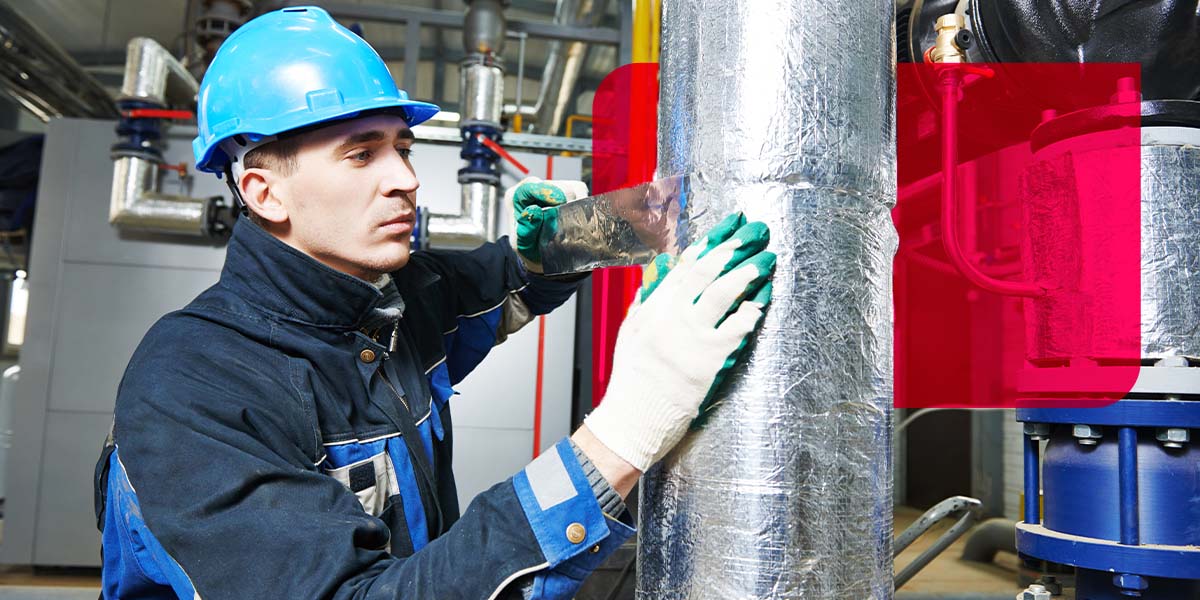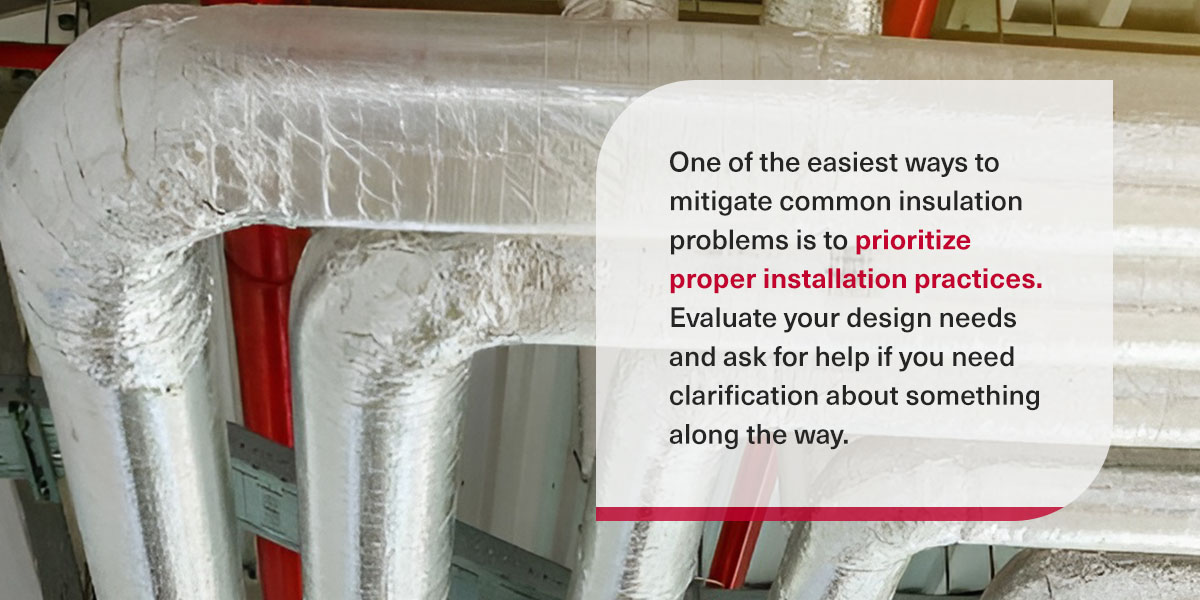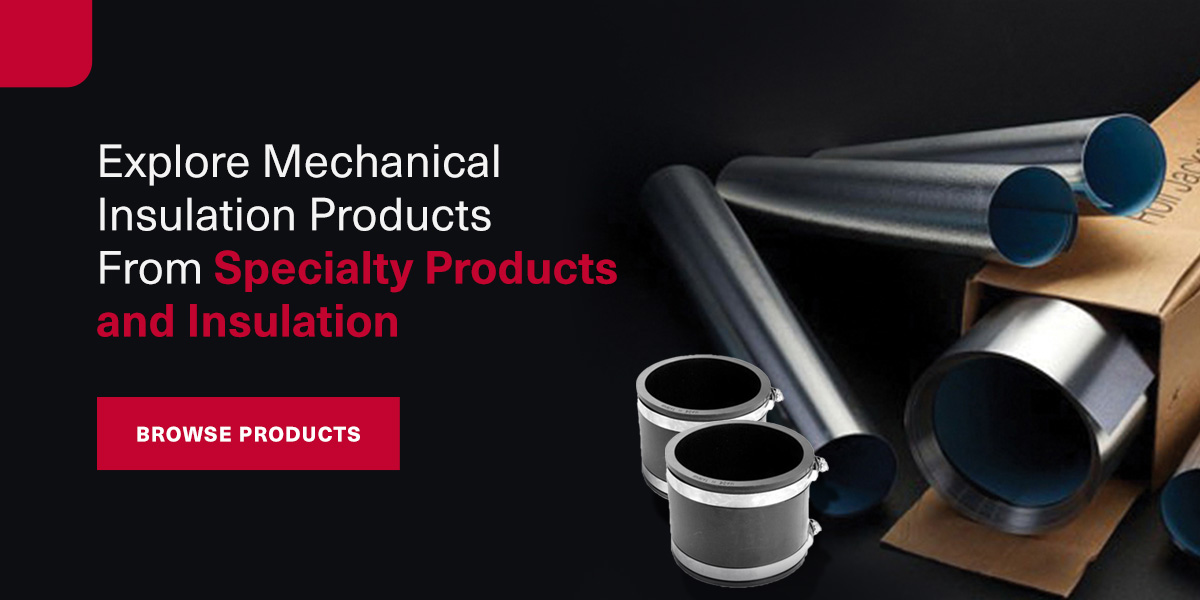Most Common Mechanical Insulation Issues (And How to Solve Them)
Posted on Thursday Dec 07, 2023 at 05:44AM in Insulation

Insulation products create heat flow resistance for better temperature control of spaces and surfaces.
The right insulation can have many advantages for industrial applications, including more accurate process control and lower energy bills. It can also help keep workers safe from burns or other injuries.
When insulation is insufficient or defective, it cannot provide the same benefits and may lead to costly downtime and repair expenses. You may experience a common mechanical insulation issue or two. We are discussing these problems and offering straightforward solutions and some helpful preventive practices.
5 Common Mechanical Insulation Issues and Solutions
When working with insulation, you may run into a few common problems. Understanding the implications of these setbacks will help you take a pragmatic approach to correct them.
Explore the following mechanical insulation issues and their solutions:
1. Using the Wrong Insulation Material
You can find insulation in various materials and forms. When choosing the right option for your application, you must consider the importance of design.
By installing the wrong type of insulation, you risk inadequate performance and safety concerns. Don't choose an option because it is the most inexpensive. Instead, consider all the finer details of your project, including the required thickness, available space, and environmental factors.
A good way to quickly sort through your insulation options is to determine the worst-case scenario if you use a certain material. For example, you wouldn't choose an option with a vapor barrier for a high-temperature application because it could melt.
2. Damaged Insulation or Faulty Installation
Moisture is a significant problem for all types of mechanical insulation. Damage to the insulation or improper installation practices can allow moisture to permeate the materials and cause additional complications, such as:
- Potential safety hazards
- Corrosion or rust
- Diminished thermal values
- Mildew and rot
- Damage to equipment and other assets
Leaving damaged or poorly installed insulation in place can result in major repair and replacement costs. Damaged insulation should be replaced and installed per the manufacturer's guidelines and industry best practices.
Regular maintenance and inspection can help you identify potential damage and tend to it before it becomes a severe problem.
3. Installing the Wrong Amount of Insulation
Another common issue with mechanical insulation is finding the right amount of materials for your application. Installing too much or insufficient insulation can have negative consequences.
Buying an overabundance of insulation that is too thick can lead to unnecessary costs and losses. Using too little insulation can lead to inadequate performance and increased heat loss or gain.
The best way to avoid getting too much or too little insulation is to take the necessary measurements. Note all your design considerations and factor them into your calculations. If you need guidance on the proper type or thickness of mechanical insulation for your project, please contact SPI - we can connect you with a certified insulation energy appraiser.
4. Corrosion Under Insulation
Corrosion under insulation (CUI) is a serious problem. When the insulating material traps moisture against the surface, it can create an environment that allows for corrosion.
The best way to fight corrosion and contamination is by performing routine assessments and inspections of the environment and insulation. You cannot correct CUI easily, so the best thing to do is to take preventive action. Regular inspections provide the opportunity to catch any potential CUI before it becomes a bigger issue, while properly applied mitigation products can reduce overall risk. Contact us to learn more about available solutions for CUI based on your specific application.
5. Condensation Buildup
We've mentioned how destructive moisture can be when trapped under insulation. In some cases, condensation forms around cold mechanical systems and causes such issues as ice buildup, insulation damage, and heat gain.
Proper installation can help solve insulation problems like condensation buildup. Seal any gaps in the insulation or tears in the vapor barrier to prevent condensation. Ensure you choose the proper thickness to keep surface temperatures above the environment's dew point, and consider choosing insulation options that are zero permeability or with a moisture barrier that effectively keeps water out.
How to Prevent Mechanical Insulation Problems
Along with understanding how to solve common mechanical insulation issues, you will also want to take preventive measures to ensure your insulation performs at its best.
The following are ways to stop insulation problems before they happen:

Always Follow Proper Installation Procedures
One of the easiest ways to mitigate common insulation problems is to prioritize proper installation practices. Evaluate your design needs and ask for help if you need clarification about something along the way.
Familiarize yourself with the best practices for installing the specific type of insulation you are working with for your application. Take your time and pay close attention to every detail.
Schedule Regular Inspections and Maintenance
In addition to monitoring the installation process, you can prevent problems with regular inspections and maintenance by a Certified Thermal Insulation Inspector . Looking closer at your insulation can help you identify small repair needs before they evolve into costly issues. If you need help getting started, don't hesitate to reach out to your local SPI branch .
Learn the Telltale Signs of Damage
Another way to prevent insulation problems is to learn the telltale signs that something is wrong. Looking into the materials you are working with and how they should look will help you flag unwanted concerns and correct them promptly.
By learning to recognize common insulation issues, you can save money on repair and replacement costs. The following are some important signs of damage:
- Visible insulation fiber
- Mechanical damage
- Discoloration
- Rips or tears
- Small gaps
Using Jacketing
To protect your insulation against the elements, consider installing quality jacketing systems .
Jacketing offers an additional layer of surface protection and can help extend the life of your insulation materials and the underlying piping and equipment.
Turn to an Expert When in Doubt
The final way to prevent common mechanical insulation problems is to turn to an expert. SPI is here to help! Our team of professionals is on hand to answer any questions and to guide you toward appropriate resources that you can use for your project.
If you have any questions about your materials, don't hesitate to contact a professional who can assist you.
Explore Mechanical Insulation Products From Specialty Products and Insulation
If you are looking for high-quality mechanical insulation products, turn to Specialty Products and Insulation. SPI partners with every major manufacturer of insulation in North America. You can find insulation for various applications, including thermal, acoustic, and fire protection.
Our knowledgeable and action-oriented team is here to help you find the right insulation for your unique applications. We are a fabricator and distributor of mechanical insulation and have been in business for over 40 years . We're here to answer your questions and guide you in the right direction.
Are you ready to get started? Browse mechanical insulation products from SPI, or contact us today!

